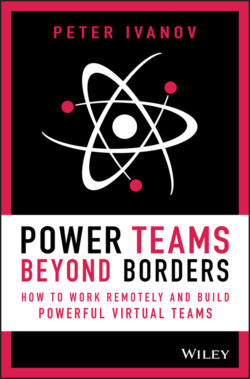Читать книгу Power Teams Beyond Borders - Peter Ivanov - Страница 17
How this Works in Practice
ОглавлениеI'd like to give you a real‐life example of where this worked in practice. I have a client in New York, who runs a massive open online course (MOOC) teaching modern architecture. To prevent this from being too dry, he has a live case study that everyone on the course works on.
The case study is designing and building resilient schools in the Philippines. You may remember that this country has suffered from earthquakes and tsunamis in the past. As a result of these natural disasters, the government in the Philippines decided to construct schools that were robust enough to enable them to be used as emergency shelters in the event of natural disasters such as these.
This was a six‐week course during which time my client provided guidance through videos. Participants didn't pay for the course until they had successfully completed it and received their certification.
He had over 35,000 people sign up for the course. He also had a team of 20 professors who were providing feedback on the designs that the students were creating.
The aim was to have a completed school design by the end of the sixth week. But as soon as it reached the fifth week, he saw a significant drop in the number of students. Many people were learning for five weeks, but when it came to completing the course and paying for their certificate, they just weren't interested.
As a result he changed his approach and asked for the fees up‐front. But this meant only 2,000 people signed up to his MOOC. By the time we had an online coaching workshop together, he was in trouble.
We decided that he should go back to the approach of taking payment on completion of the course, but that he'd focus on significantly increasing conversions to the final week and therefore payment. How did we do this?
To begin with, we decided to split this massive group of 35,000 people into groups of five. It sounds like a mammoth task, but we got the students to self‐organise and choose their groups based on factors like proximity, time zone and so on.
Once people had split into a group of five, they were invited to an online session where they each presented their lifeline and then discovered their strengths using the five questions I outlined above. Based on what they found out through these exercises, they then split the work from the project between the five of them.
Once the critical week, week five, arrived, they were invested in their team and they couldn't let their teammates down. This led to his conversions increasing to 20,000 completions of the course and payments.
For my client, this resulted in a $480,000 boost to his revenues, all just by using these two simple techniques I've just talked you through.
